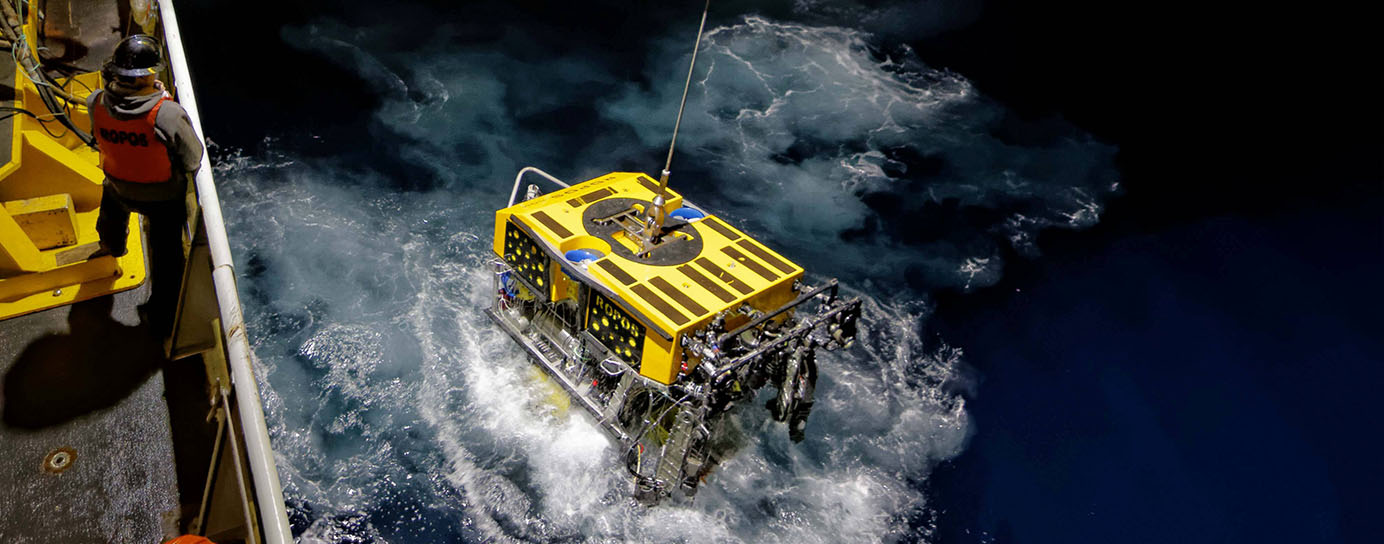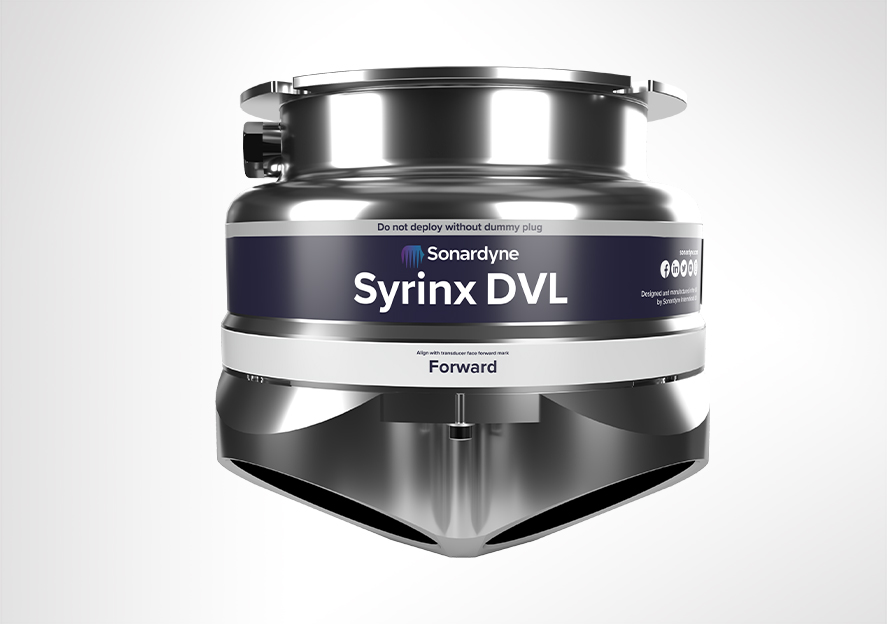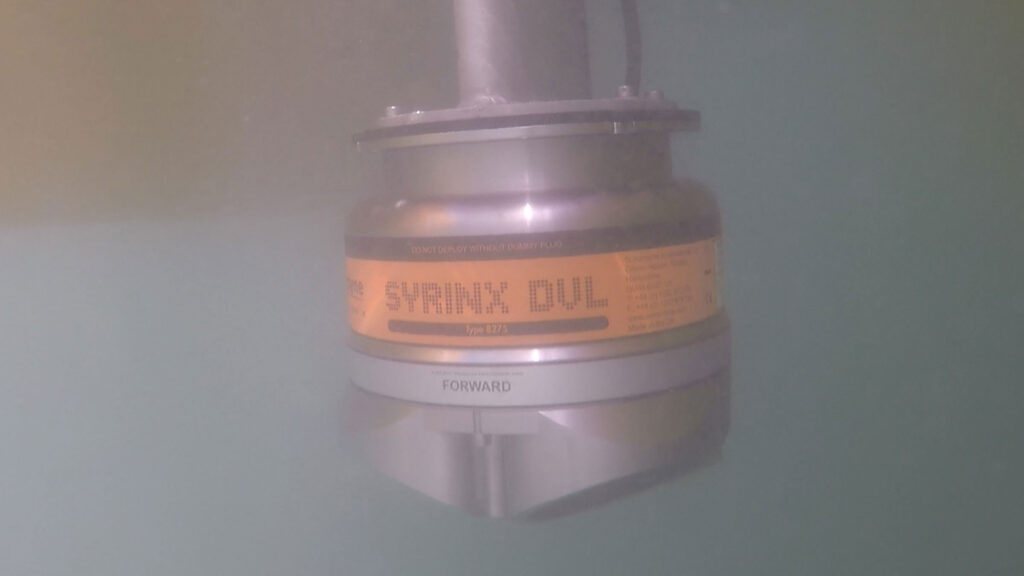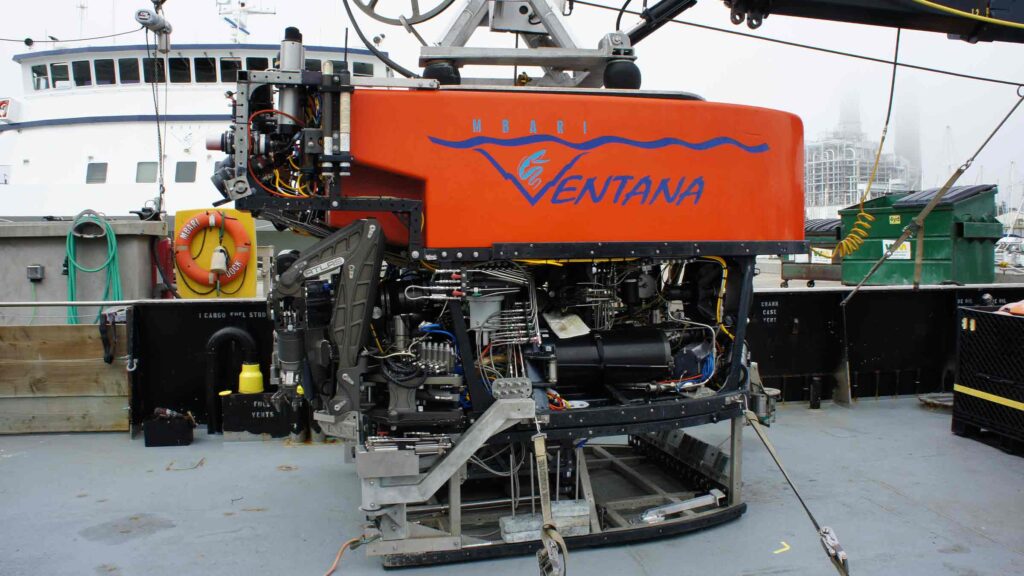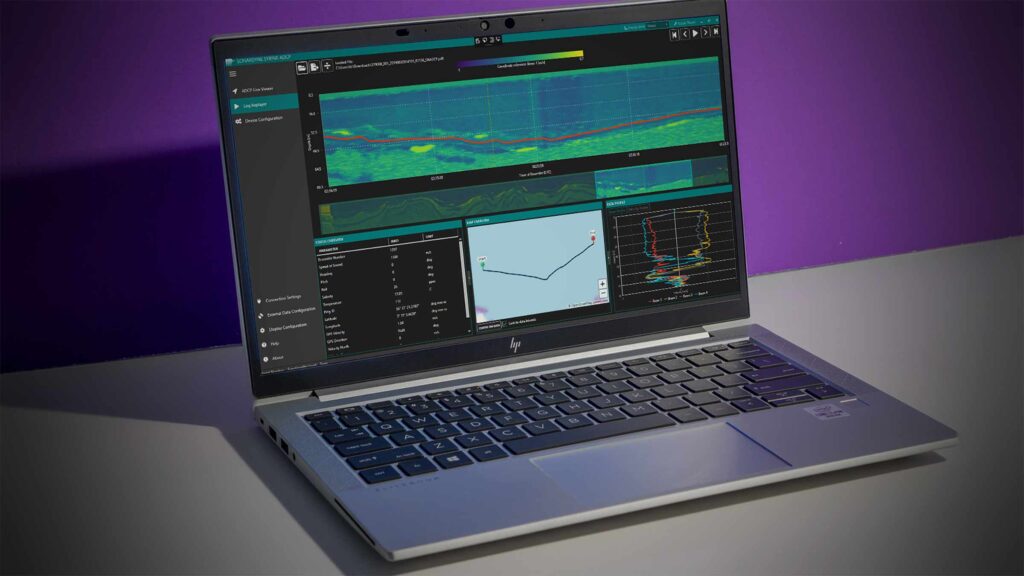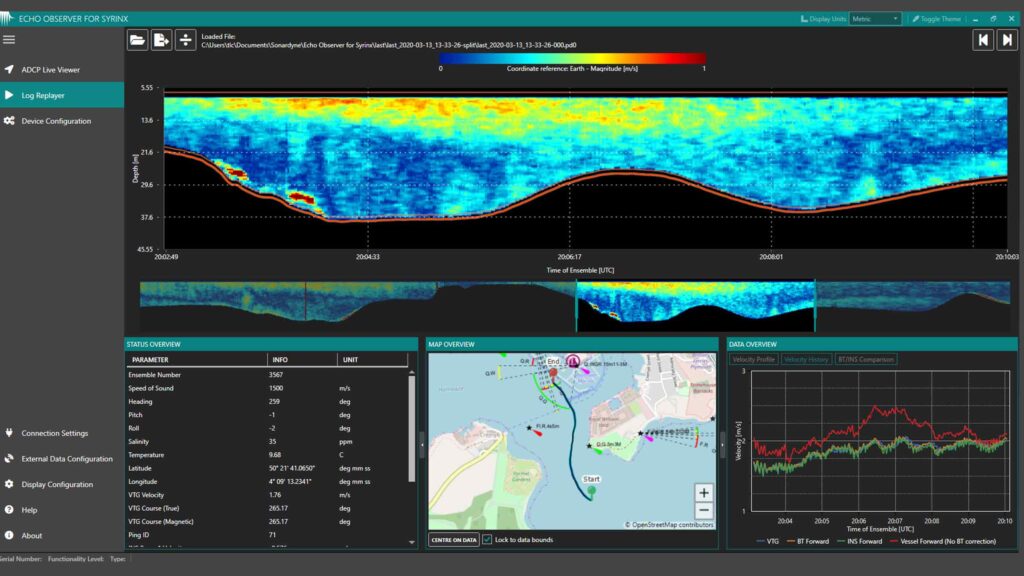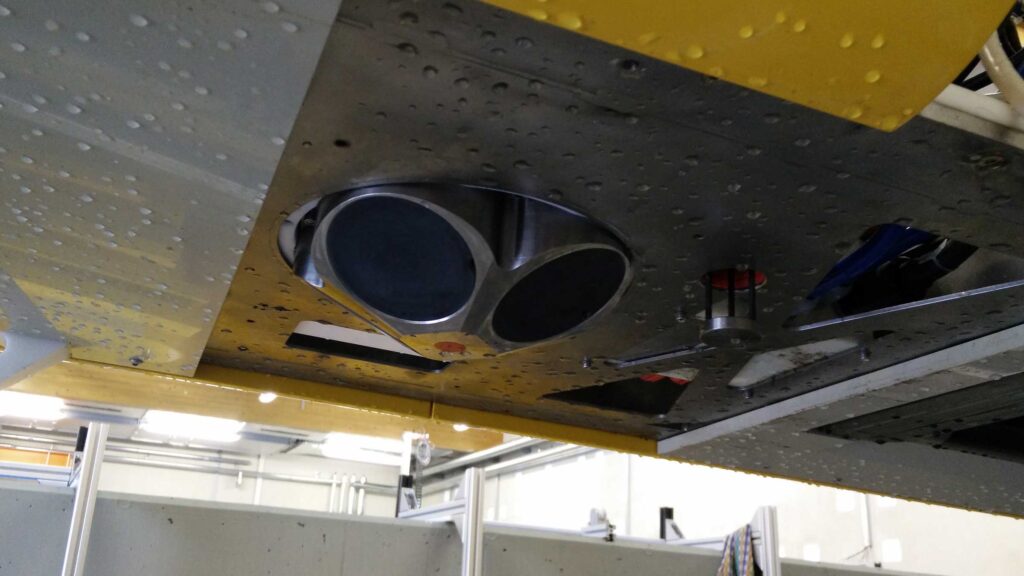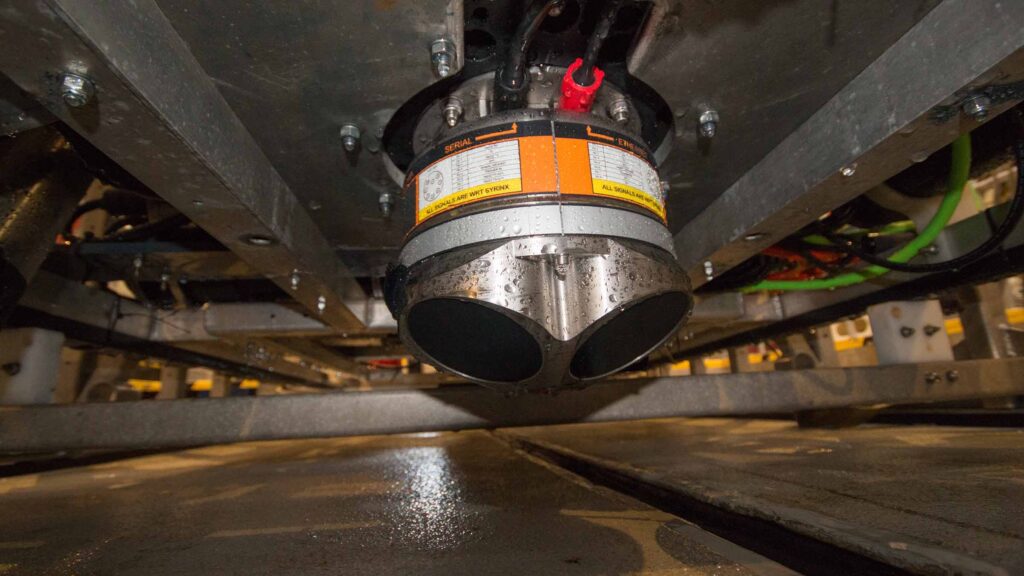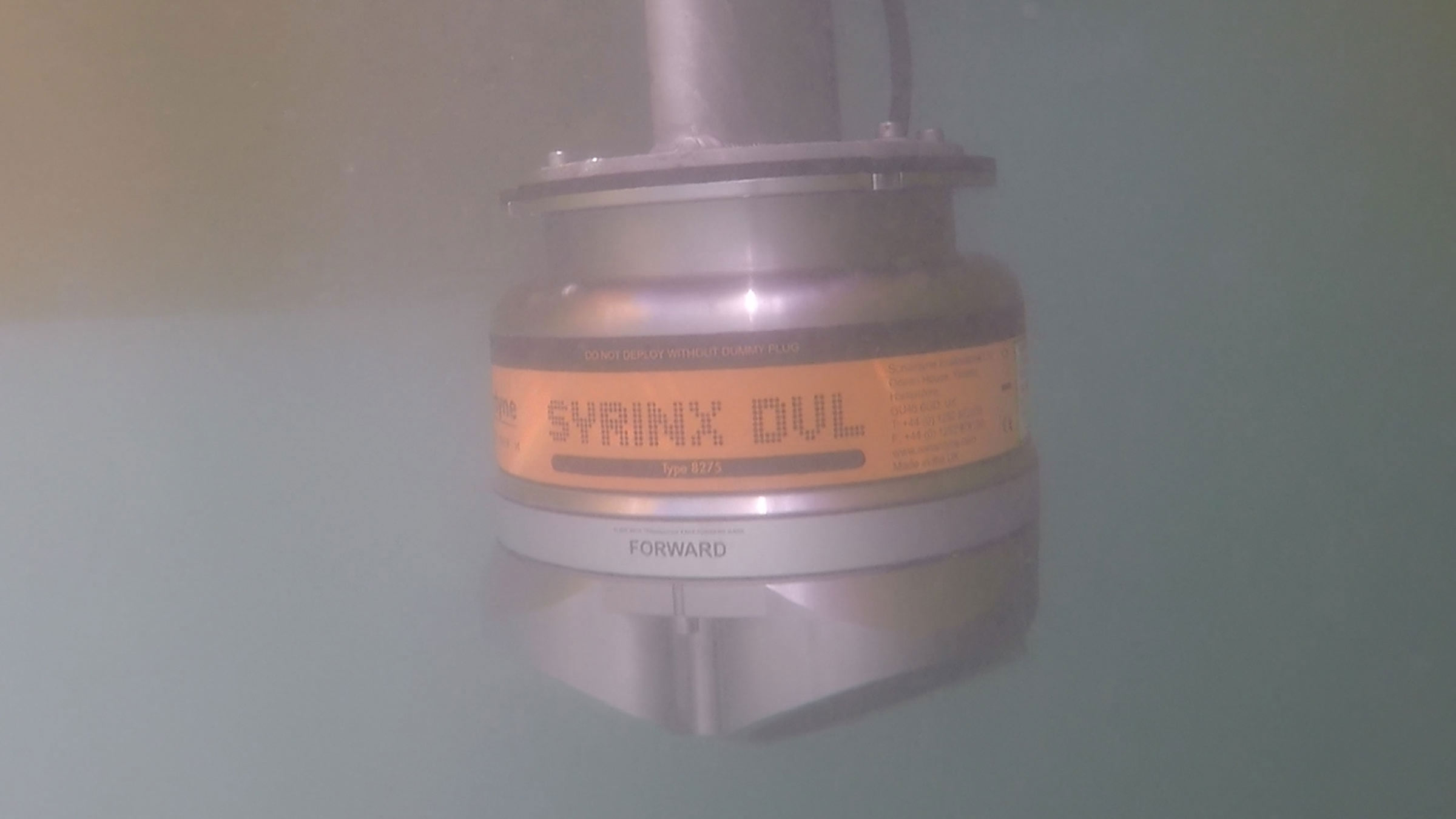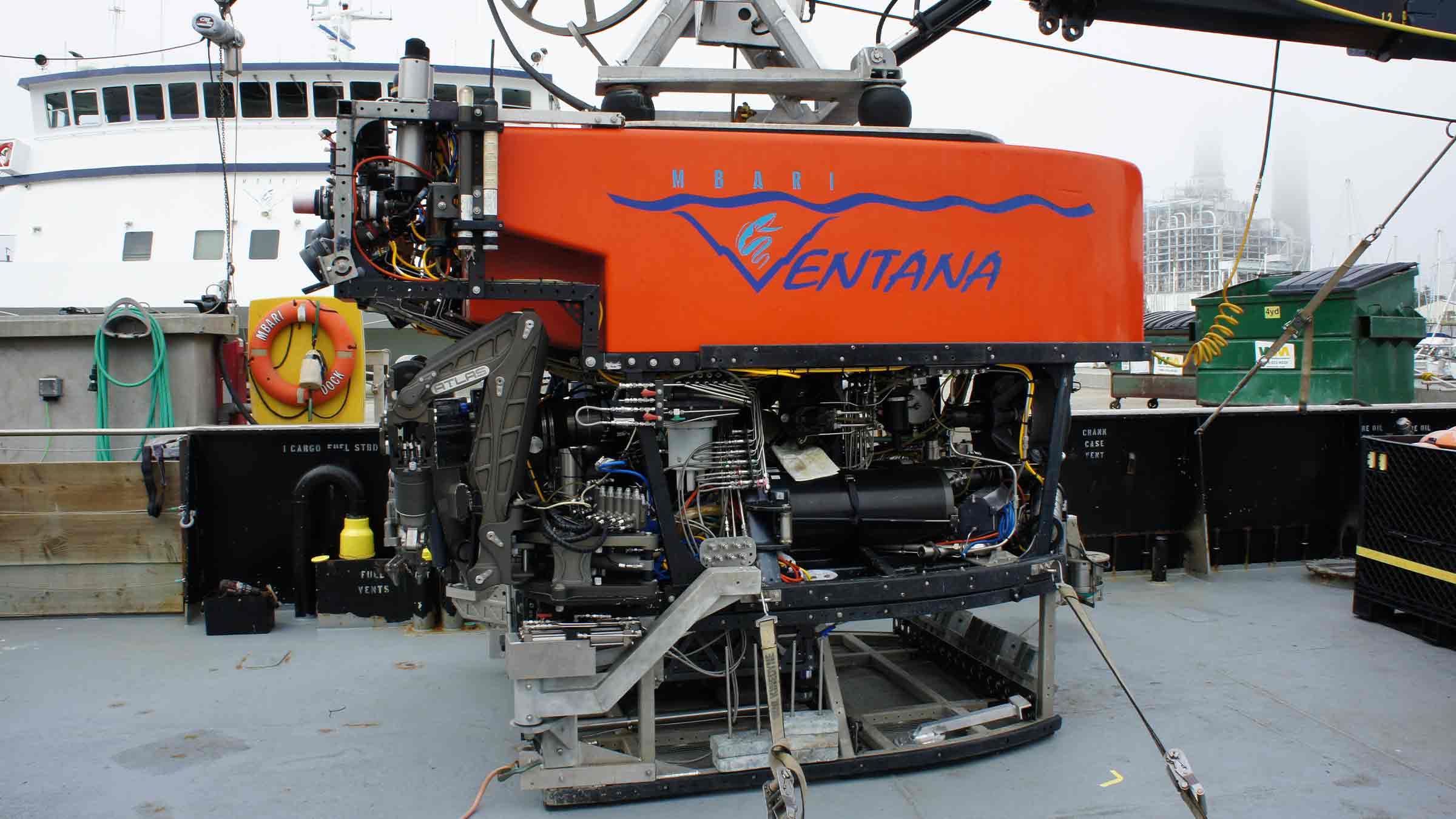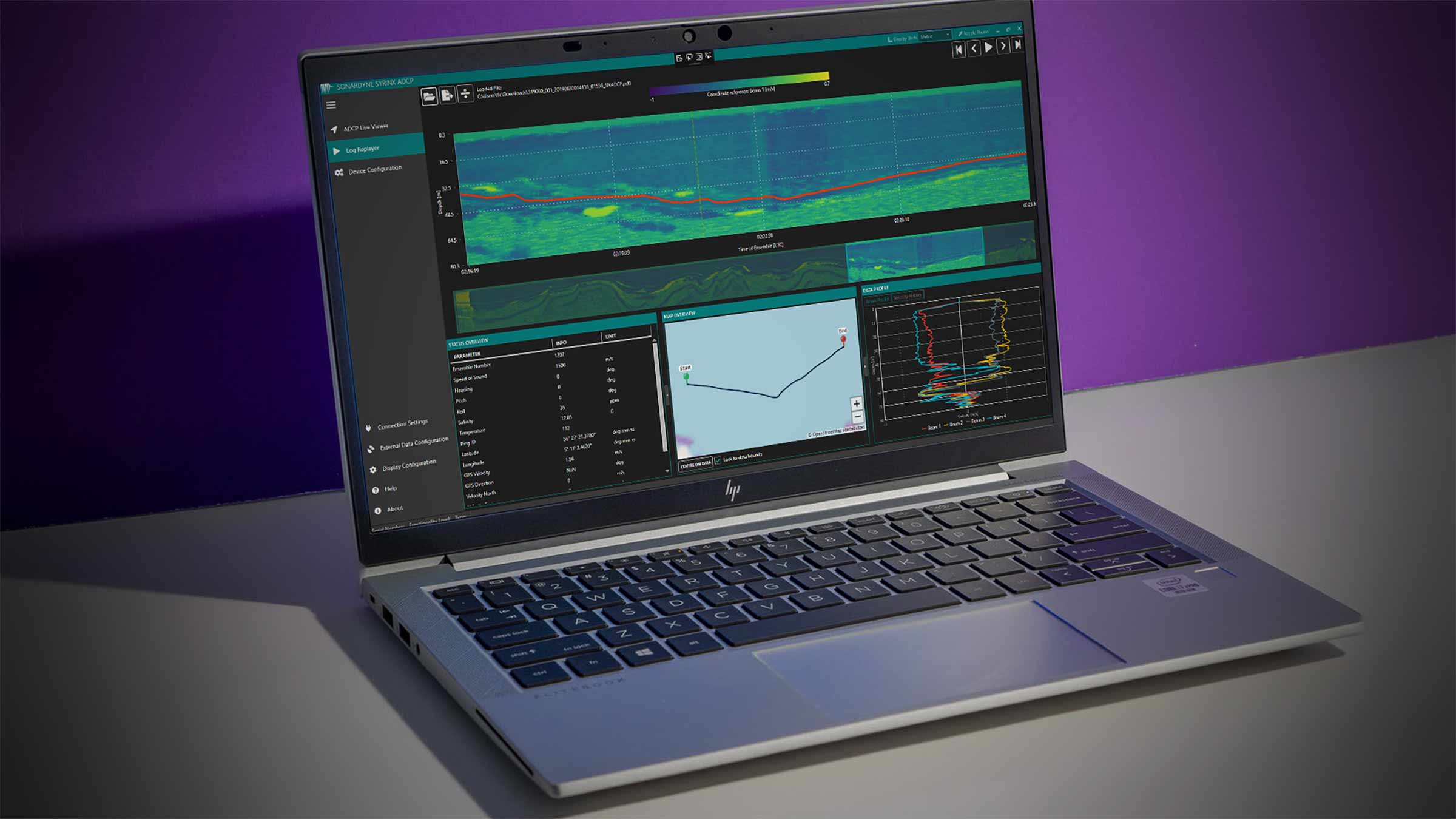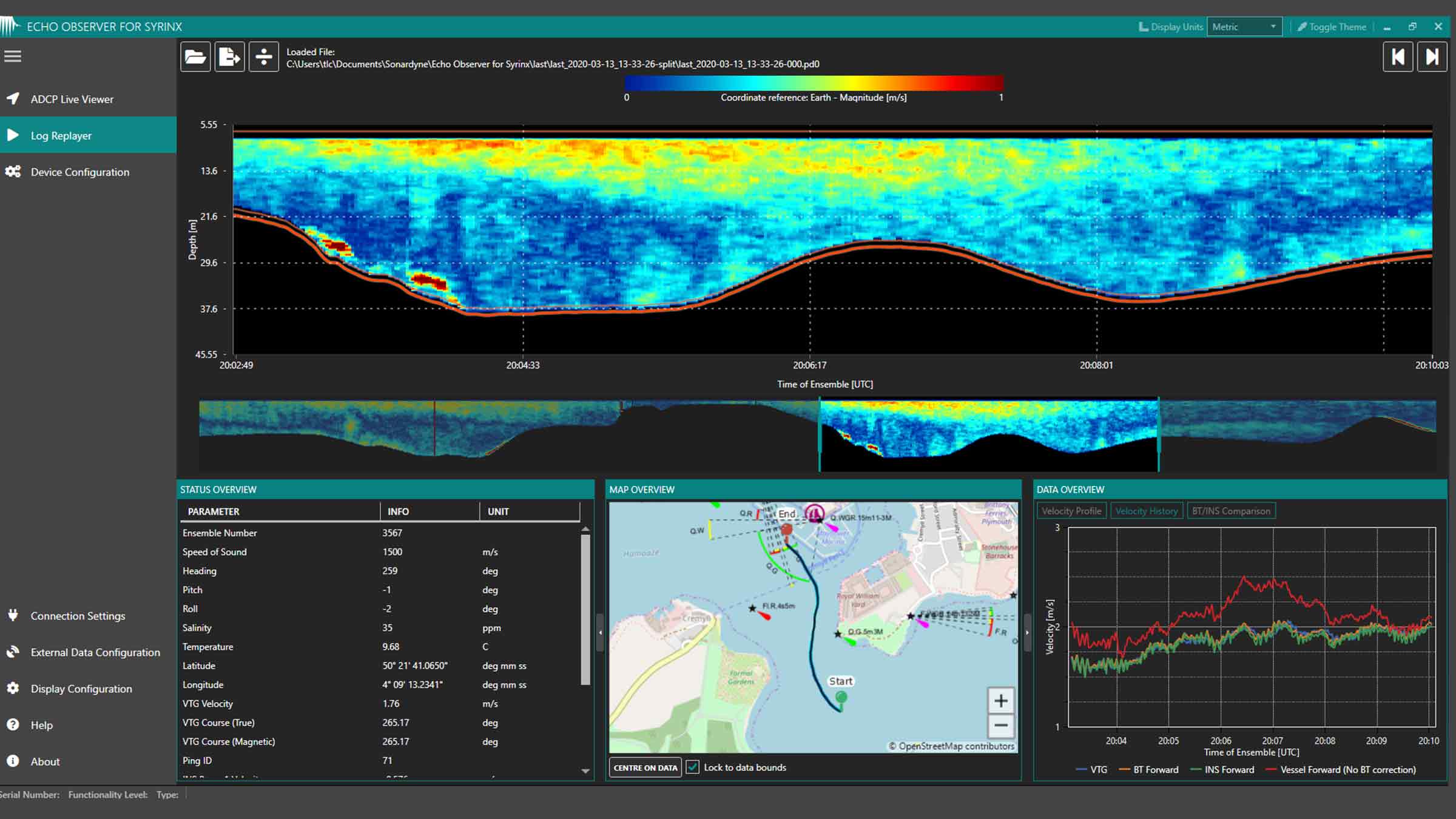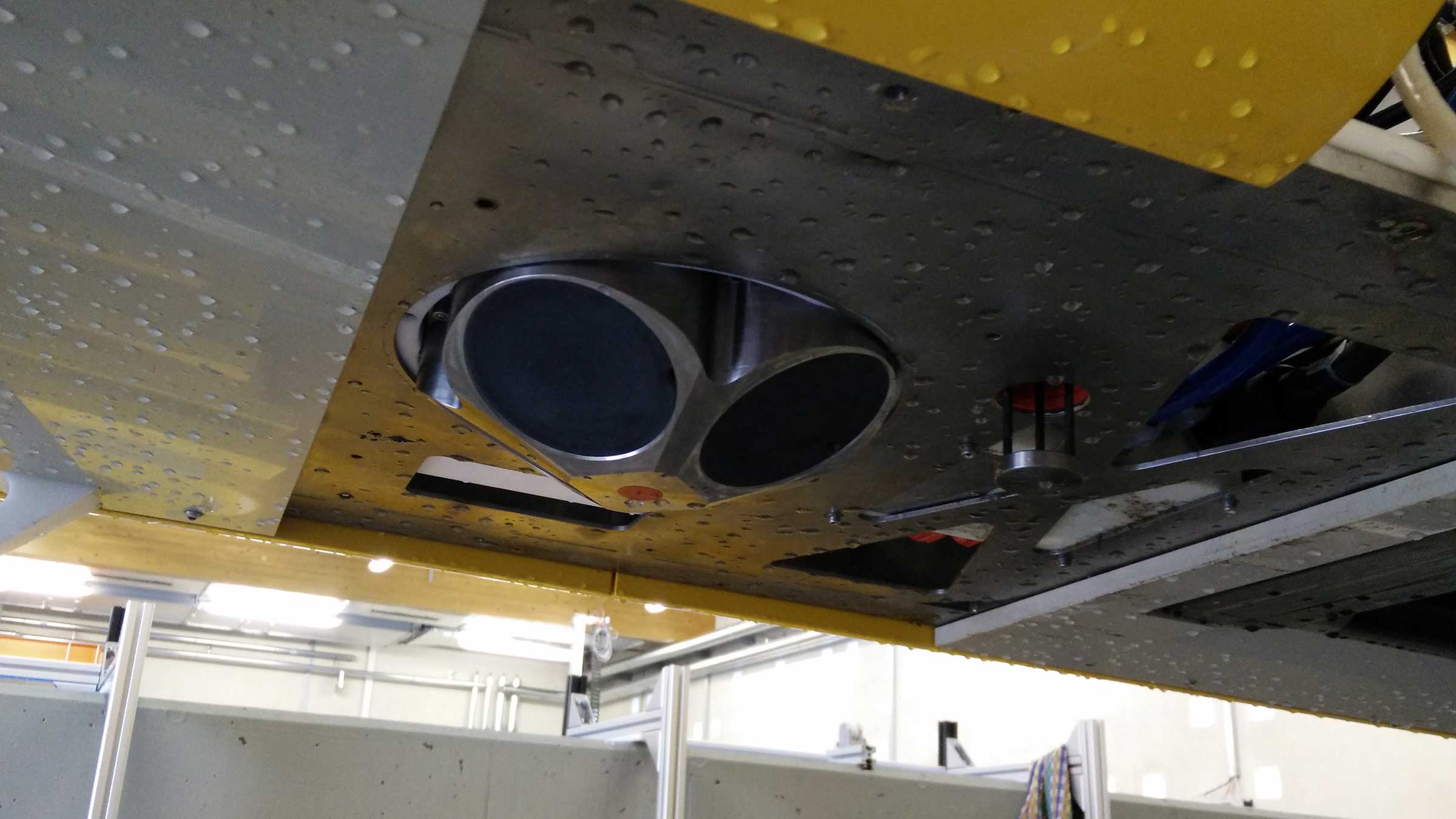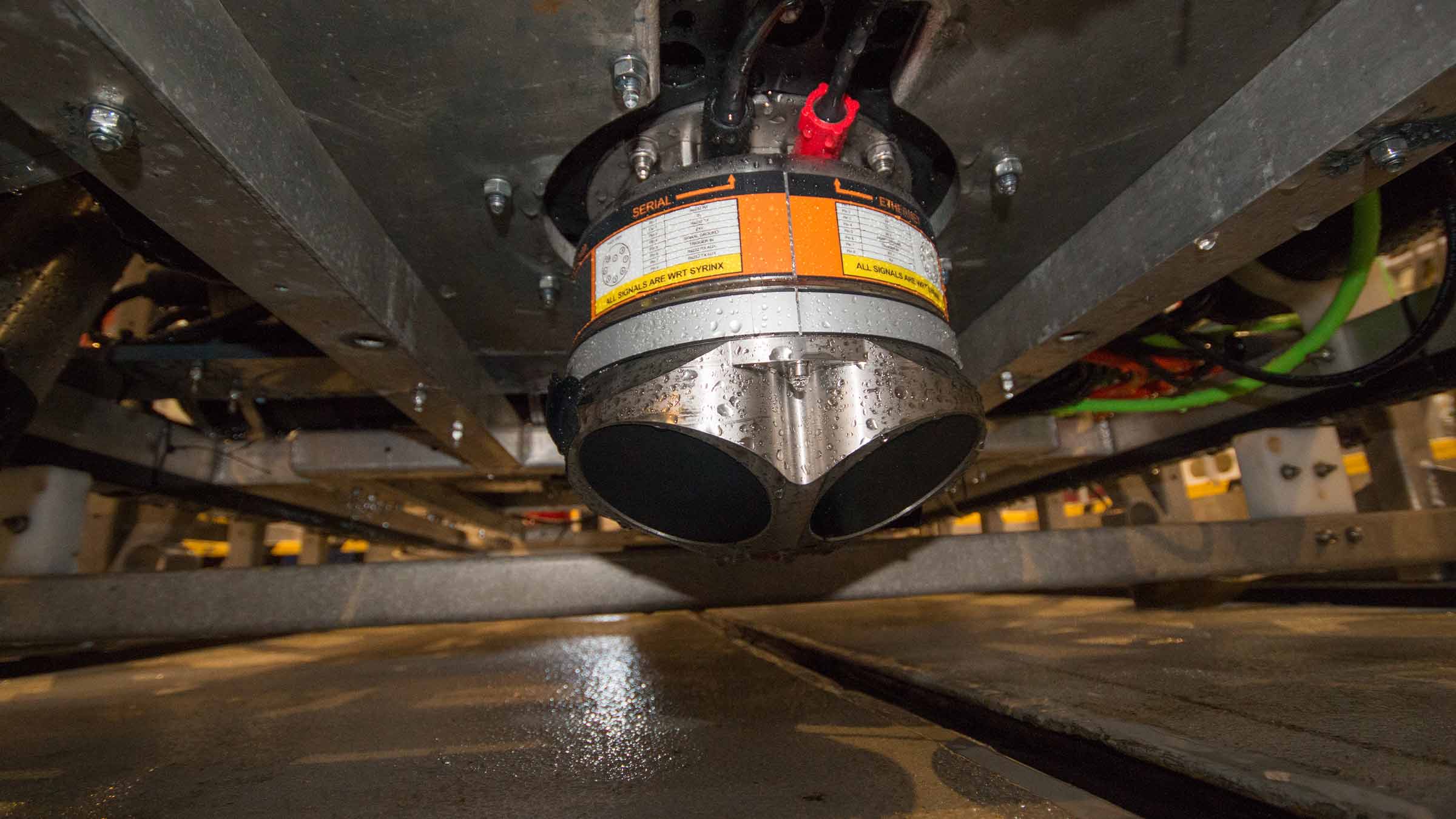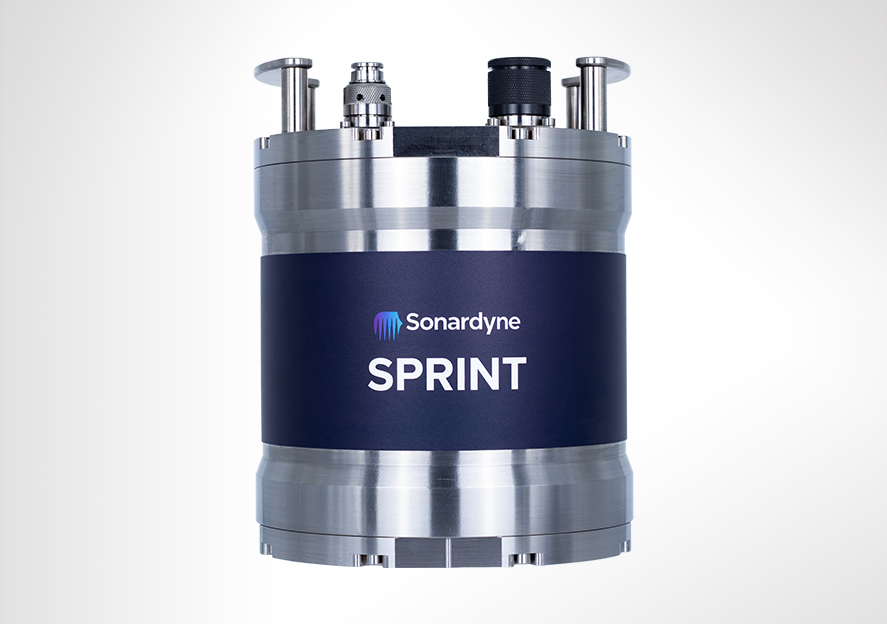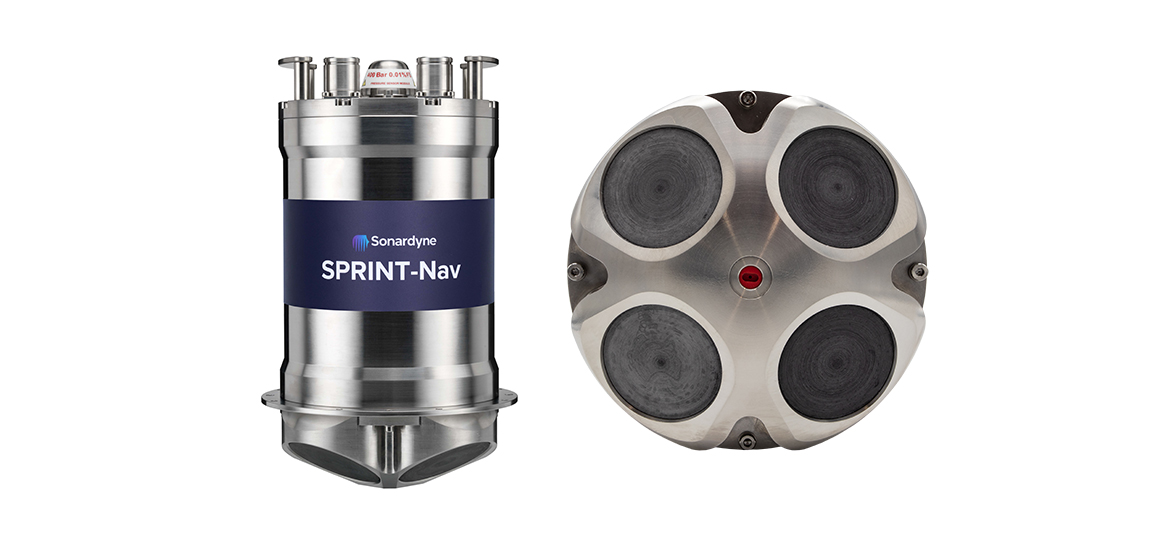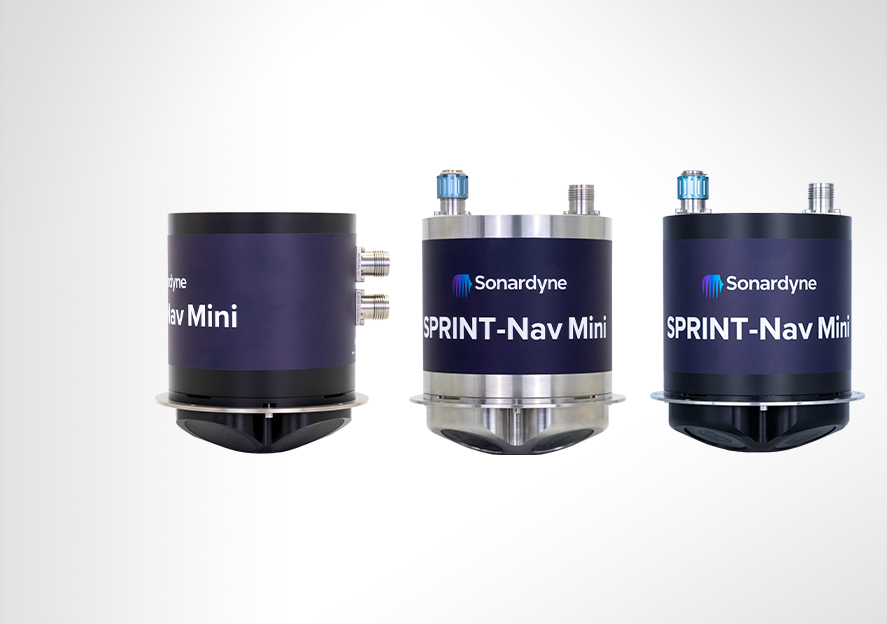Syrinx DVL
Designed and manufactured entirely in the UK, Syrinx is a class leading DVL for surface and subsea vehicles, available in two frequencies: 600 kHz or 400 kHz for higher altitude tracking up to 230 m. Syrinx variants combine high resolution and high altitude tracking, in single, easy to install navigation instruments. Its adaptive bottom lock technology provides consistency and reliability over challenging and changing topography, working at an altitude higher than 85% of the world’s subsea infrastructure. This reduces the amount of time a vehicle must dive on free inertial.
If your mission requires water profiling, Syrinx’s highly capable ADCP mode enables both navigation and profiling without the need for separate instrument, saving you cost and payload.
When tightly integrated with Sonardyne’s SPRINT INS, unmatched DVL-aided navigation can be achieved. This allows for enhanced performance through optimisation of beam-level data passed between Syrinx and SPRINT to aid velocity prediction and outlier rejection, with positioning able to continue even if one or two DVL beams are unavailable. For the ultimate integration Syrinx and SPRINT are also available as a single combined unit with integral pressure sensor. SPRINT-Nav is one of the smallest inertial DVL instruments available on the market suitable for almost any ROV and survey task.
Why Syrinx?
- Unmatched Versatility: Use Syrinx as a DVL, ADCP, or both simultaneously. You decide how to harness its power.
- Deep-Water Performance: Maintain solid bottom lock up to 230 m, with 4,000 m depth rating as standard.
- Adaptive Technology: Our smart bottom lock ensures reliable navigation across varied seabed types.
- Dual-Frequency Options: Choose between 400 kHz for extended range or 600 kHz for high resolution.
- Seamless Integration: Syrinx works harmoniously with our SPRINT INS for unparalleled navigation accuracy.
- Efficiency: Combine navigation and water profiling in one instrument, saving you space and resources.
- Reliability: Individually replaceable transducers to minimise downtime.
- Adaptability: Available in 4,000 m, 6,000 m and OEM versions to suit your specific needs.
- User-Friendly: Web-based System Manager for easy configuration and control.
- Compatibility: Fits existing mounting arrangements and supports various data formats for smooth integration.
Dive deep, control smart
Syrinx runs an embedded system manager using a web browser, eliminating the need to install dedicated PC software. This allows configuration and testing of Syrinx prior to deployment, control during subsea operations and visualisation of the navigation data.
The hardware and vehicle interfacing are easy to install, set up and use. It’s compatible with DVL/ADCP mounting arrangements from other vendors so you shouldn’t need to modify your subsea vehicles to upgrade to Syrinx. PD0, PD3, PD4, PD6, PD13 telegrams are supported for integration to third party navigation systems.
A 4,000 m rated titanium housing is supplied as standard to meet the requirements of work-class ROVs. 6,000 m and OEM (no housing) versions are also available.
Syrinx’s transducers have been designed, built and tested in-house to provide maximum performance, and can be individually replaced, reducing ownership costs and repair time. The entire array is water blocked meaning that should damage occur to the transducer array, the unit’s electronics are isolated from water ingress.
Echo Observer for Syrinx (EOS)
EOS is a software application for Syrinx and SPRINT-Nav systems which allows ADCP data to be viewed, quality controlled, logged and then exported. This standalone application is compatible with Windows 7 or 10 and requires only modest processing resources.
EOS provides an intuitive interface to Syrinx, allowing the device to be configured over Serial port or Ethernet with a quick setup procedure for ADCP measurements. You can immediately view the profile data and make any necessary adjustments before committing to a long-term deployment.
Once initial data inspection has been completed, EOS provides the link to the onward data processing chain: Industry-standard PD0 data can be exported as comma-separated variable (CSV) files, ideal for importing into Excel or Matlab for analysis and post-processing. The exported PD0 data can be tailored to match your analysis needs, such as specific portions of the water column, or a favoured frame of reference.
Specific sections of the PD0 data can be omitted in CSV export if they are not relevant to your analysis, reducing file size and therefore processing time. Echo Observer for Syrinx is included with the ADCP functionality upgrade for both Syrinx and SPRINT-Nav.
Experience the Syrinx DVL advantage
Whether you’re navigating an AUV through complex underwater terrain or precisely positioning an ROV for critical operations, Syrinx provides the accuracy and reliability you need. Our adaptive technology keeps you on track over challenging topography, reducing reliance on inertial navigation.
Ready to transform your underwater operations? Let’s collaborate to integrate Syrinx into your systems and unlock new possibilities in subsea exploration and work. Connect with our team today!
Performance
• 0.4 /230 m min/max altitude
• 0.4–120 m ADCP profile range
• >10 m/s velocity range (DVL)
• 0.01cm/s velocity resolution (DVL)
• Up to ±8.4 m/s ±0.4% of measured value (ADCP along-beam)
Design
• Titanium housing as standard; OEM option
• Replaceable transducers; water block array
• Onboard web UI for setup and configuration.
• Dedicated software for ADCP features
• Max 204 mm x 225 mm, 8.2 kg weight in water (6,000 m version)
Ownership
• Warranty: 1 year return to Sonardyne service centre
• ITAR Controlled: No
• UK Export Licence: Required
• What’s in the box: Syrinx DVL/ADCP and QuickStart guide, EOS software (optional)
Acosutic
• 400 or 600 kHz frequency
• 4-beam array @ 30 degree angles
• Up to 25 kHz DVL ping rate
• Up to 4 Hz ADCP ping rate (optional mode)
Specifications
| Feature | 8275-4531/6531 600 kHz | 8275-4561 400 kHz | |
|---|---|---|---|
| Operating Frequency | 600 kHz | 400 kHz | |
| Bottom Velocity – Single Ping Precision (Standard Deviation @ 1 m/s) | ±0.22 cm/s | ±0.28 cm/s | |
| Long Term Accuracy | ±0.12% ±0.1 cm/s | ±0.22% ±0.1 cm/s | |
| Minimum/Maximum Altitude | 0.4/175 m | 0.4/230 m | |
| Velocity Range | >10 m/s | >10 m/s | |
| Velocity Resolution | 0.01 cm/s | 0.01 cm/s | |
| Data Output Rate | 25 Hz maximum | 25 Hz maximum | |
| Water Reference Velocity | Accuracy | ±0.2% ±0.1 cm/s | ±0.2% ±0.1 cm/s |
| Layer Size | Selectable | Selectable | |
| Minimum/Maximum Range | 0.4/80 m | 0.4/120 m | |
| ADCP | Profiling Range | 0.4–80 m | 0.4–120 m |
| Velocity Range & RMS (Along Beam) | Up to ±5.6 m/s ±0.4% of measured value | Up to ±8.4 m/s ±0.4% of measured value | |
| Maximum Number of Cells | 255 | 255 | |
| Maximum Ping Rate – ADCP | 4 Hz | 4 Hz | |
| Maximum Ping Rate – DVL + ADCP | 2.5 Hz | 2.5 Hz | |
| Beam Width | ±1.0° | ±1.3° | |
| Beam Angle | 30° | 30° | |
| Transmit Source Level (dB re 1 µPa @ 1 m) | 217 dB (maximum) | 217 dB (maximum) | |
| Sensors | Temperature | -5 to 40°C | -5 to 40°C |
| Pitch/Roll (Optional) | ±0.5° | ±0.5° | |
| Pressure (Optional) | ±0.1% full scale | ±0.1% full scale | |
| Configuration (Array) | 4-beam array @ 30° beam angles | 4-beam array @ 30° beam angles | |
| Communication and Logging | Communications | Dual RS232, multi-port Ethernet (TCP & UDP) | Dual RS232, multi-port Ethernet (TCP & UDP) |
| Trigger Inputs | 3–12 V rising or falling edge configurable | 3–12 V rising or falling edge configurable | |
| Internal Logging | 32 GB internal memory | 32 GB internal memory | |
| Output Telegrams | Sonardyne proprietary, PD0, PD3, PD4, PD6, PD13, SDDBT Simultaneous telegram output |
Sonardyne proprietary, PD0, PD3, PD4, PD6, PD13, SDDBT Simultaneous telegram output |
|
| Voltage (dc Input) | 24 V (±10%) | 24 V (±10%) | |
| Average Power (Typical) | 10 W nominal | 10 W nominal | |
| Depth Rating | 4,000 or 6,000 m array | 4,000 or 6,000 m array | |
| Operating Temperature | -5 to 55°C | -5 to 55°C | |
| Storage Temperature | -20 to 55°C | -20 to 55°C | |
| Mechanical Construction | Titanium | Titanium | |
| Connector Type | Subconn | Subconn | |
| Dimensions (Height x Diameter) | 4000 m | 189 x 225 mm | 189 x 225 mm |
| 6000 m | 204 x 225 mm | n/a | |
| Weight in Air/Water | 4000 m | 12.0/9.1 kg | 11.3/8.5 kg |
| 6000 m | 14.4/10.9 kg | n/a |
